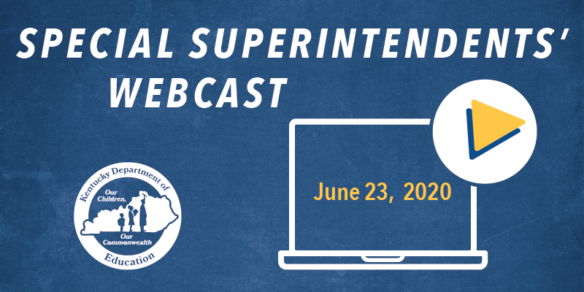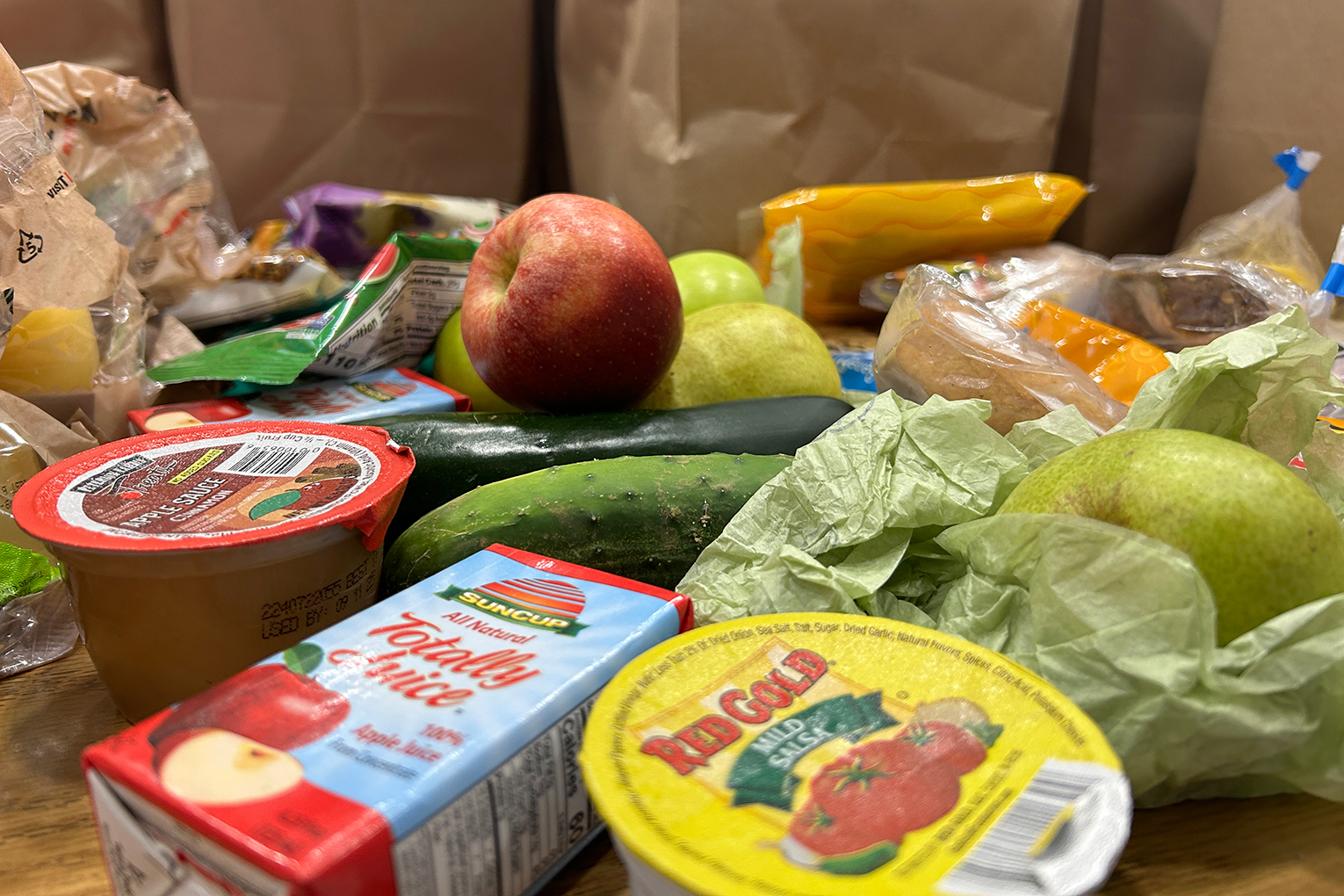
- The Department for Public Health’s Healthy at Schools document includes input from superintendents, teachers and others taken over the past few weeks.
- School districts urged to plan for unwillingness to wear masks, keep some on hand.
By Jim Gaines
jim.gaines@education.ky.gov
Gov. Andy Beshear will release the Kentucky Department for Public Health’s (DPH) Healthy at School guidance document Wednesday afternoon, Interim Commissioner of Education Kevin C. Brown told school superintendents during the weekly Special Superintendents’ Webcast June 23.
Brown said he knows superintendents have been under pressure while trying to formulate plans for how and whether to reopen buildings for the 2020-2021 school year.
“I think we have some good news for you,” he said.
DPH’s Healthy at Schools guidance will outline public health standards – some that are requirements, others that are best practices – on a range of issues, including social distancing, masks and temperature checks. The document was created by DPH, with feedback from the Kentucky Department of Education (KDE), superintendents, teachers and many others, Brown said.
Brown said much of the information contained in the DPH guidance already has been discussed openly over the past few weeks.
Mask Guidelines
During the webcast, many questions revolved around the need to wear face masks and how to deal with students who don’t or won’t wear one.
“We don’t have a ‘mask police,’ we don’t have one at KDE, nor will there be,” Brown said.
Children shouldn’t be punished for not wearing a mask or taking related precautions, including social distancing and hand-washing, but it should become a “culture and climate issue” like dress codes, he said.
Rather, a good-faith effort by school districts to set and follow policies is expected by everyone from the governor on down, including doctors, Brown said. Some people or communities may resist, but school officials should set examples of compliance themselves and get notable figures such as coaches and athletes involved, he said.
KDE Associate Commissioner Amanda Ellis from the Office of Teaching and Learning said schools should think proactively and have preventive measures ready for various situations – such as keeping a supply of masks on hand, including aboard buses, for students who lack them.
If a student waiting for the bus has no mask or has a temperature above 100.4 degrees, they can’t be left at the bus stop, said Kay Kennedy of KDE’s Division of District Support. Instead, they should be isolated to the extent possible on the bus, and his or her parents or guardians contacted upon arrival at school, she said.
Masks will be required when students are moving around or if they’re within 6 feet of each other, health officials have said.
The Healthy At School guidance will specify that masks will not be required on children who aren’t yet enrolled in 1st grade, according to Associate Commissioner Robin Kinney of KDE’s Office of Finance and Operations.
Several superintendents asked whether there is any flexibility in the 6-foot distancing rule. Brown and White said students may be closer than 6 feet if they are wearing masks.
If parents choose not to send students to school due to mask requirements, compulsory attendance still applies, Brown said. Districts may consider options for students to include in-person instruction or remote learning.
Several superintendents wondered if transparent face shields could substitute for close-fitting masks, but White said shields don’t provide the same level of protection as masks.
Standards for precautions in school sports are yet to come, as they are for professional sports, Brown said.
Food Guidelines
KDE’s guidance on food service once schools reopen was released on June 22. Schools need to plan for different ways of serving food, including using more than one location, “grab and go” meals, staggered times or a mix of methods, said Kathryn Embree, branch manager of the KDE Division of School and Community Nutrition. That should include consideration of extra staff and supplies that might be needed, accommodation for students with disabilities and longer cleaning times, she said.
All schools will need written food safety plans outlining standard operating procedures and staff training, including record-keeping for any needed contact tracing, Embree said.
For several months, meal programs have operated under waivers from the U.S. Department of Agriculture (USDA) that let schools feed students in non-group settings. Kentucky, along with several other states, is asking the USDA for waiver extensions. Officials hope for an answer within the next few weeks, said Jennifer Langfels of KDE’s Division of School and Community Nutrition.
Funding Questions
In the coming year, local school funding determinations will focus less on in-person attendance, Kinney said. Education officials are recommending the state keep in place for another year the provision of Senate Bill 177 (2020), which permitted districts to select the use of data collected in the 2018-2019 or 2019-2020 school year to calculate Support Education Excellence in Kentucky (SEEK) funding for the upcoming school year, she said.
For the 2020-2021 school year, districts will have several ways to measure student participation – as distinguished from physical attendance – and will be asked for feedback on the practicality of various monitoring methods, Kinney said.
Brown said the issue can be resolved by the General Assembly, but since it’s unlikely to be in session until January, KDE will seek the governor’s use of emergency authority for any needed waivers before then.
Employee Testing
Asked about recommended COVID-19 testing for faculty and staff, Brown said Beshear would love to see 10% of school employees tested per week. Schools’ insurance should cover the cost, he said.
When a student or school staff member tests positive for COVID-19, the health department in their home district will be notified, White said. Contact tracers will ask that person about who they have been near, which is why schools need detailed records on bus and in-school contacts, she said. Improved contact tracing means one case of COVID-19 is unlikely to require closing a whole school – unless that district is lax in enforcing social distancing or mask policies, White said.
If a school employee is diagnosed with COVID-19 or quarantined for monitoring, they have the option of using any accumulated sick/personal leave but also may qualify for leave under federal emergency legislation, said KDE Interim General Counsel Todd Allen.
Brown said he recognizes difficult tasks lie ahead for school districts, but the handling of last semester’s closure of in-person classes shows Kentucky educators are equal to the task.
MORE INFO …
- June 23 Special Superintendents’ Webcast
- Kentucky Department for Public Health’s COVID-19 webpage
- KDE’s COVID-19 webpage
- COVID-19 Hotline (800) 722-5725




Leave A Comment